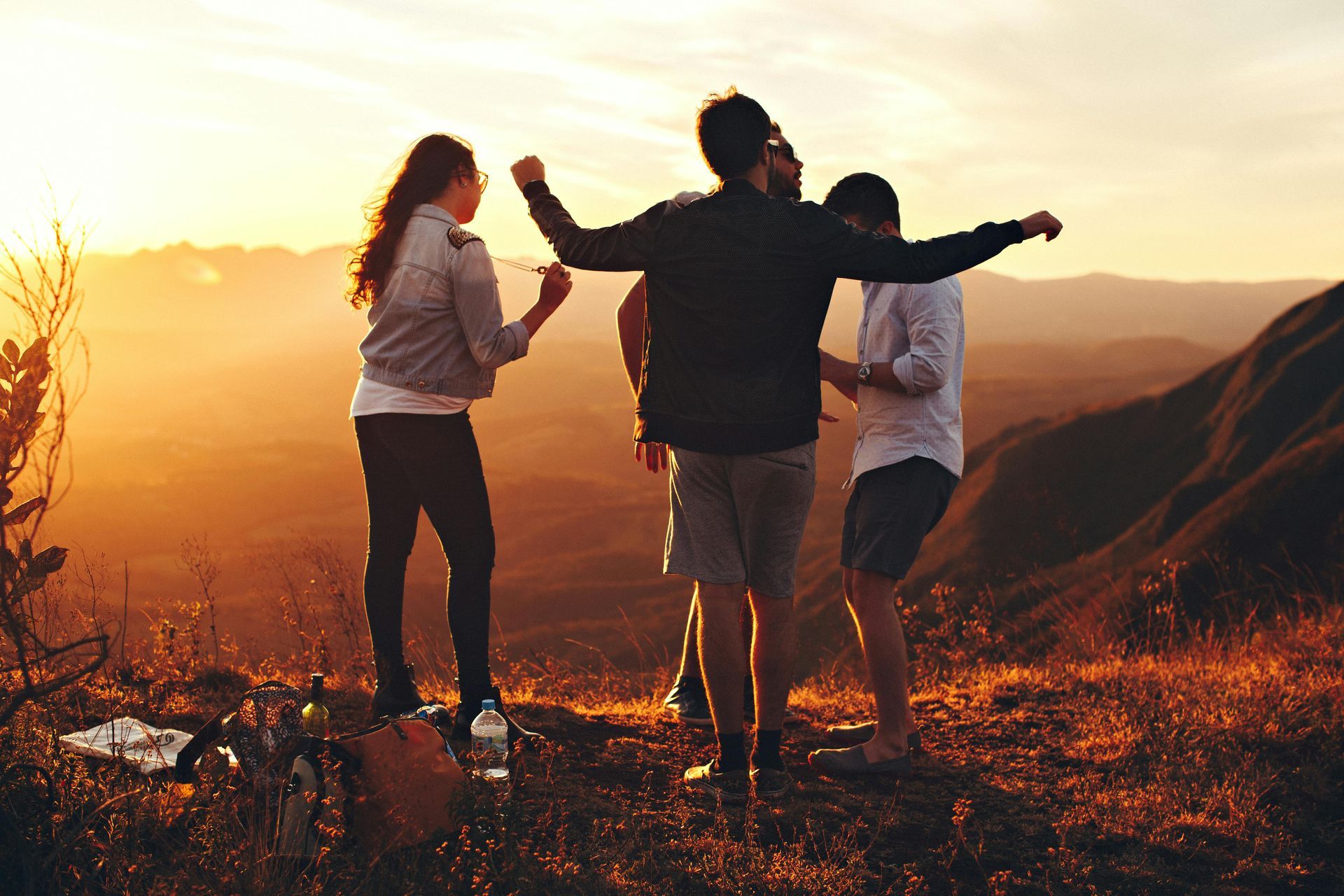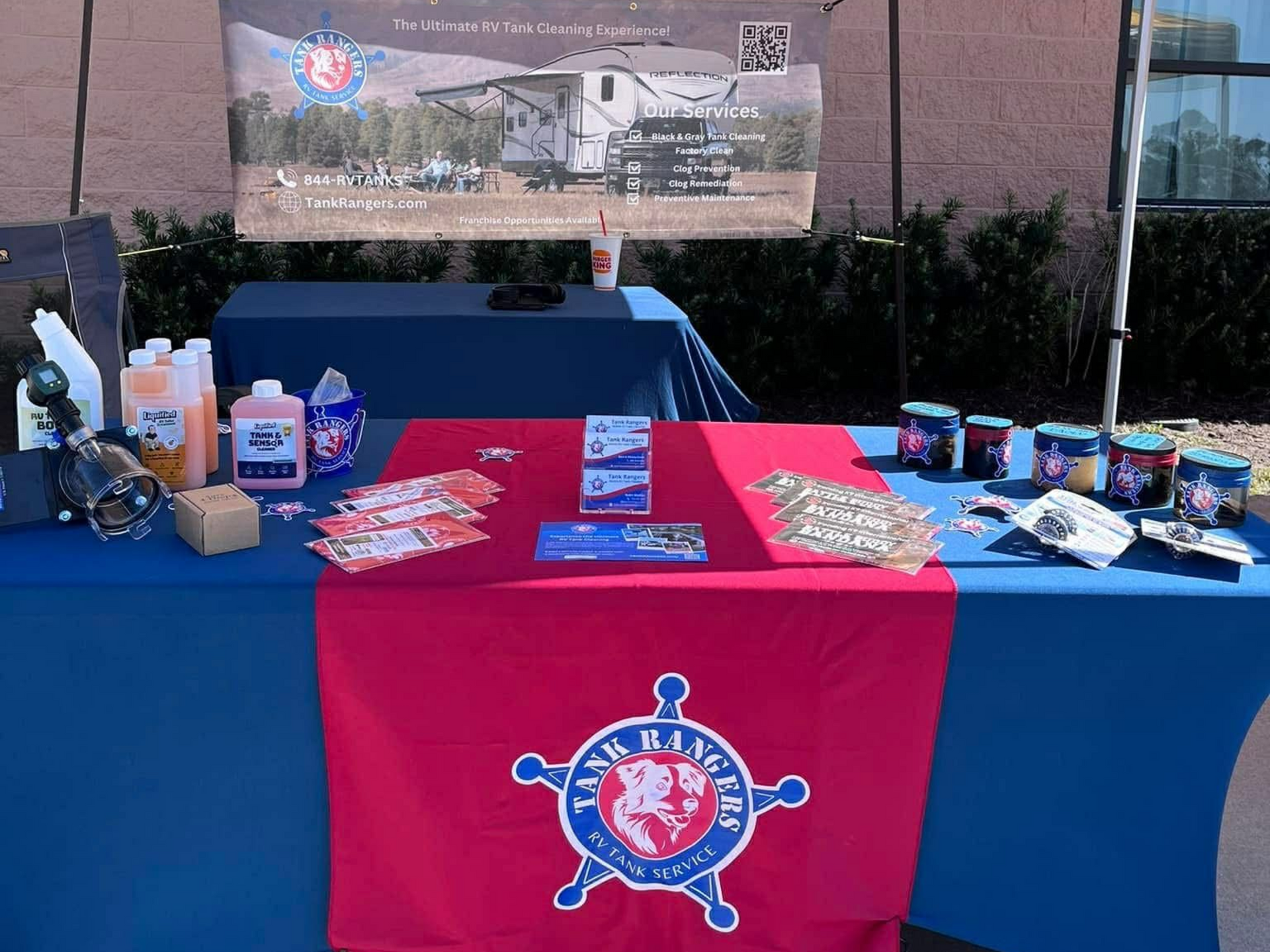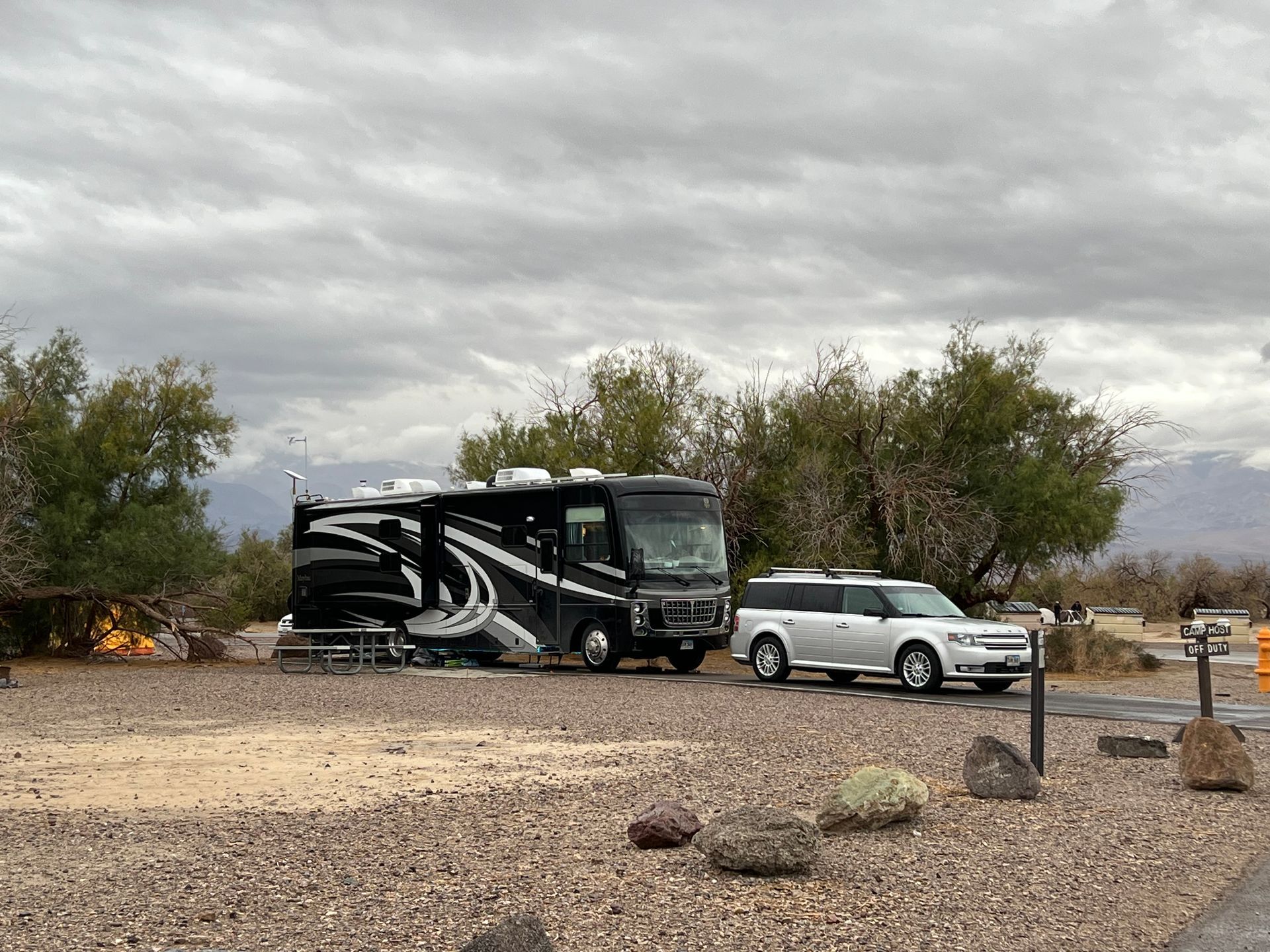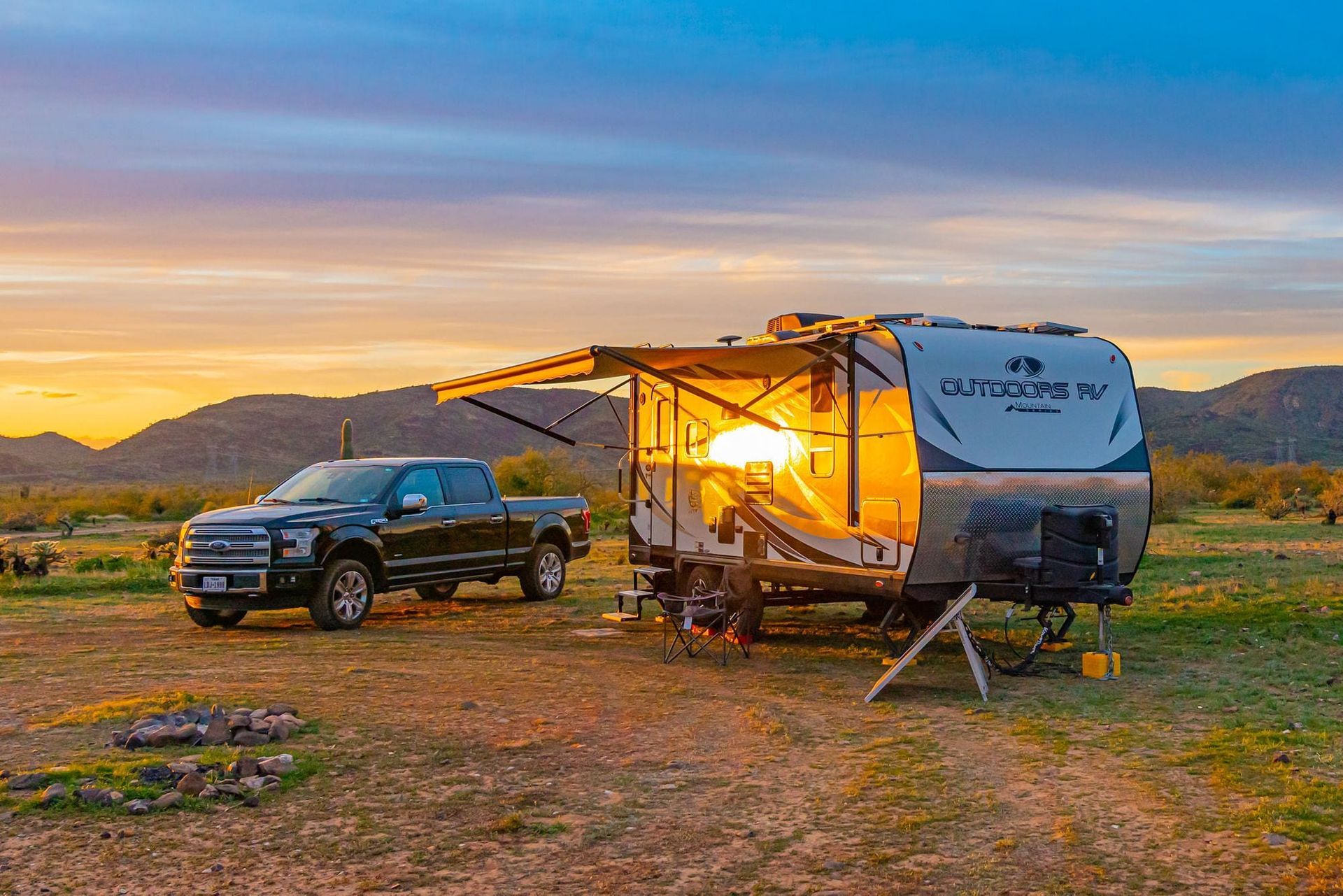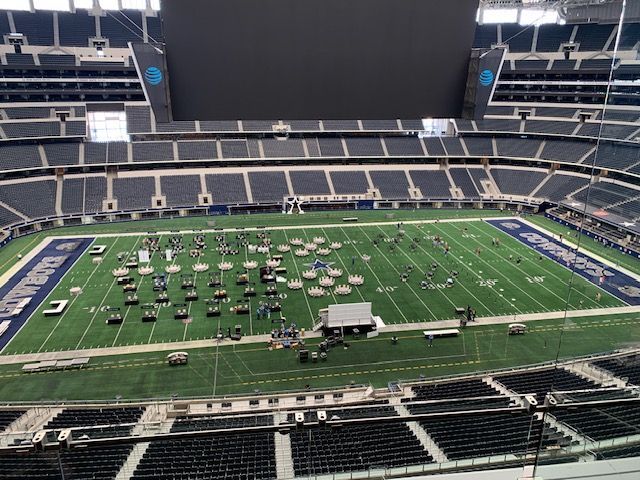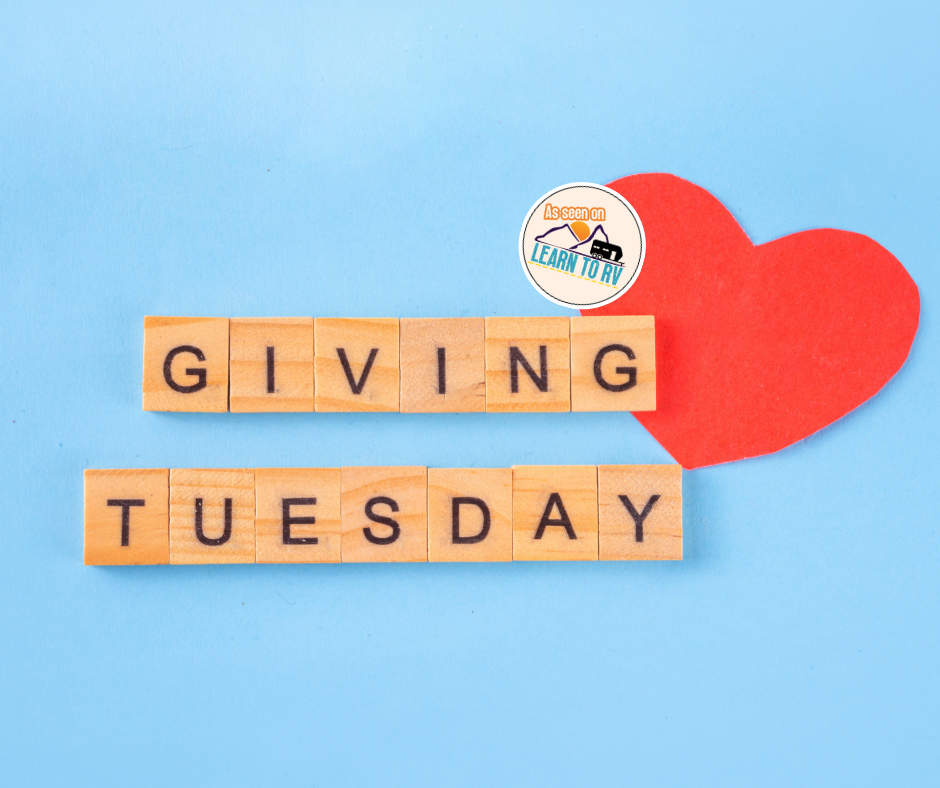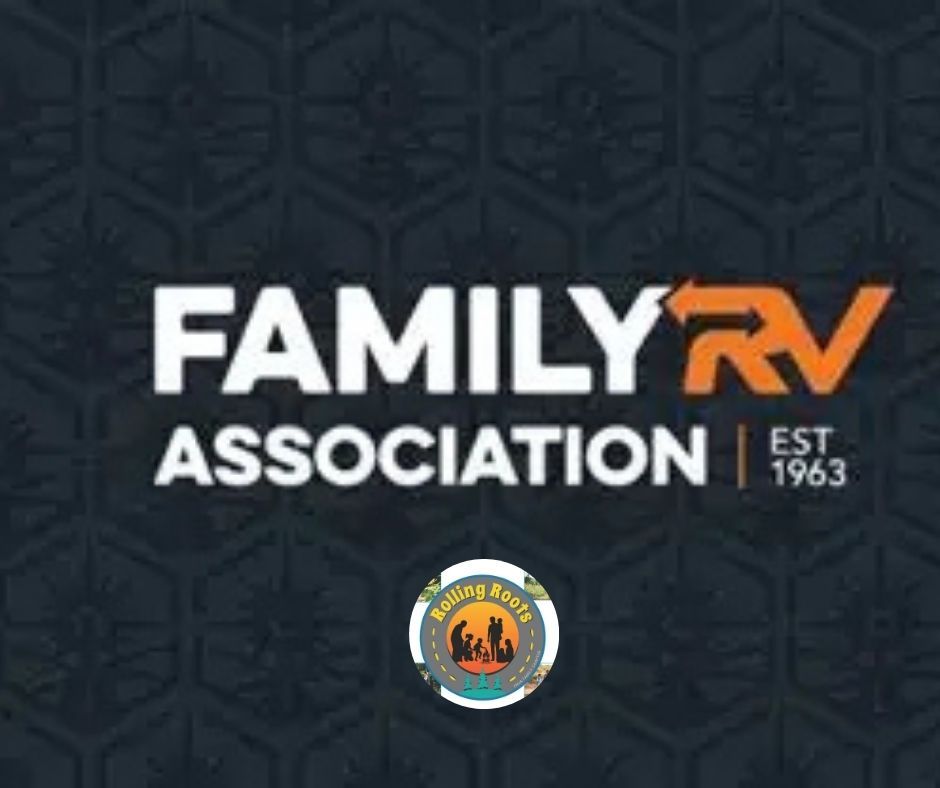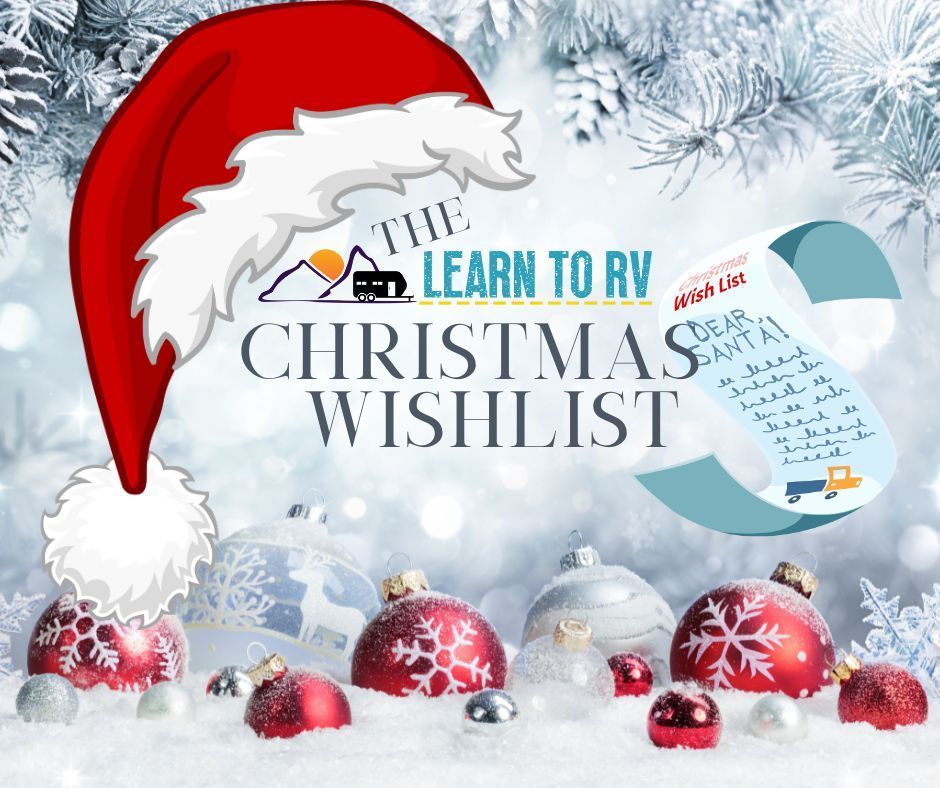Boondocking Basics: Tips and Tricks for Off-Grid RVing
Ashley Wright • July 24, 2025
You’ve seen the amazing photos and videos of an RV with this gorgeous, wild background and not a soul in sight, right? How do people get those? By boondocking! Boondocking is camping without water, sewer, or electrical hookups. Most only consider it boondocking if it’s on public land in the middle of nowhere, and it’s usually free.
Some people spend a night in a Cabela’s or Cracker Barrel parking lot, or maybe they use Harvest Hosts. However, many people do not consider these stops boondocking. Don’t get me wrong; we all need to use them sometimes. But there’s something magical about being able to stay out for weeks at a time, especially if you’re the only human for miles around.
This article is not a comprehensive guide to boondocking, but a collection of tips and tricks that you might not find elsewhere. My family has spent probably about two years (cumulative, not continuous) boondocking, so to say that we’ve picked up some tricks is an understatement!
Rodent Control
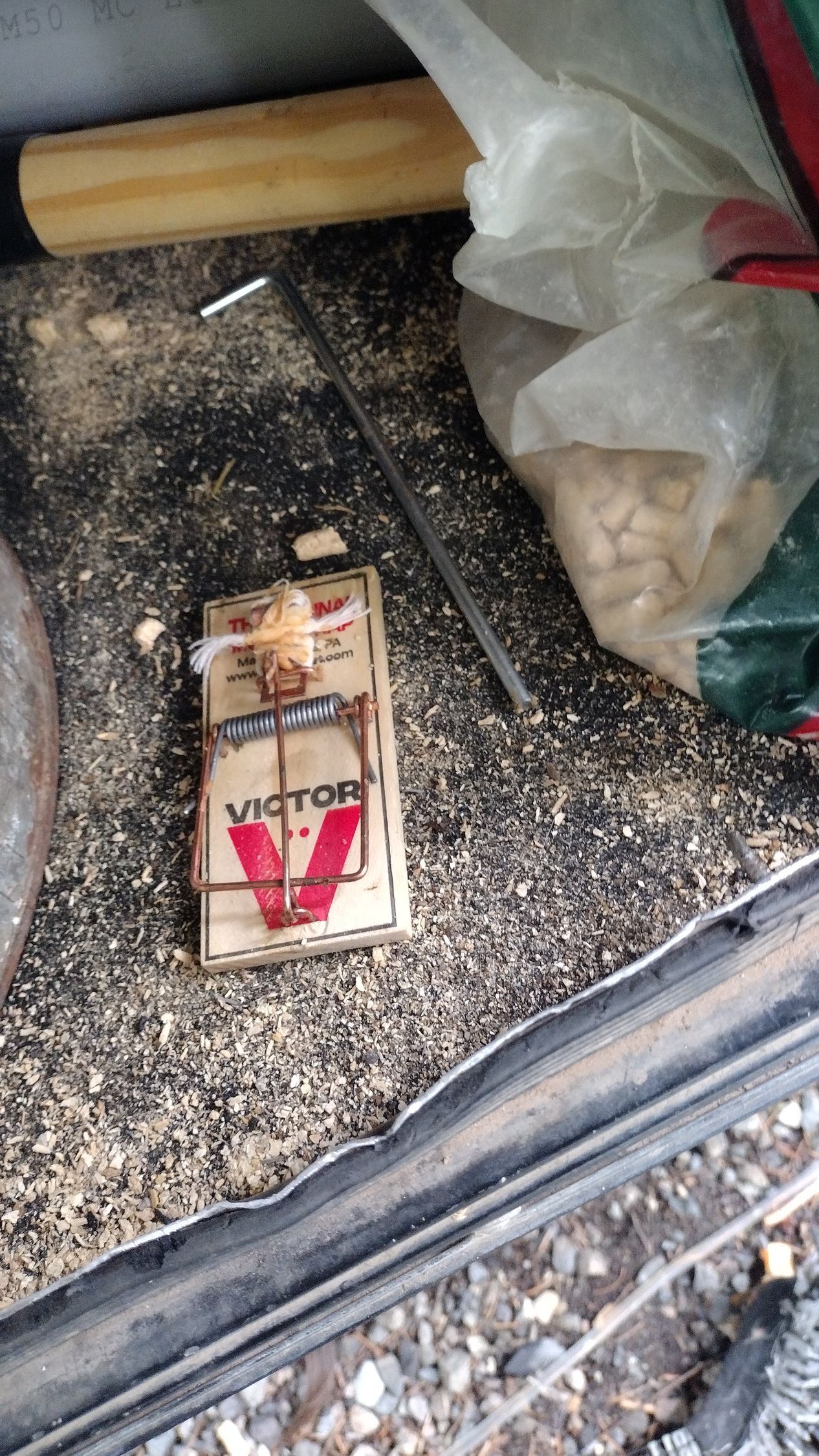
When you are out among nature, particularly without a lot of human activity, you’re going to run into a fair amount of animal activity. While we’ve had bears, deer, and donkeys come by our campsites, the most concerning animals to visit are rodents. I’ve heard it said that a mouse will do one thousand dollars worth of damage every night. They love chewing electrical wires, but will also get into your insulation, can spread disease, and of course, eat your food.
- Outside lights can really help deter rodent activity. We have several solar lights we put out when we stop:
- Rope lights along the ground
- A couple of bigger, brighter lights pointing under our rig at the front and back
- Several smaller lights go around our rig. Since our bus has a metal shell, we use magnets to put them up.
Lights around our rig are also great for:
- Deterring human activity and preventing theft.
- Watching other animals at night. (The night we saw the bear, it was because the lights under my window turned on and I looked out to see the bear walking around! We likely wouldn’t have seen it without the lights.)
- Our safety and comfort as we walk around our own rig at night.
- Rubber snakes on the ground and places rodents might be interested in (like the engine; just make sure to take them out before you start it!) might help deter them.
- We once had rodents try to build a nest in our exhaust pipe! We got a PVC endcap to close it when we park and haven’t had the problem repeat.
- When you do have to trap rodents, don’t bother with the sticky traps; get the snap traps. The cheap ones work best. Tie a string to the trigger (there’s a hole) and work peanut butter into the string. If you have mice, it will catch them, every time.
- Get into things, rearrange them, get light in there, and generally make them uncomfortable for unwanted tenants. If you have a storage area that you don’t disturb much, that’s the perfect place for rodents to move in.
- Keep all edibles in rodent-proof containers, especially if it’s something you don’t get into often. Most of our pet food is in our outdoor, under-bus storage, which is more readily accessible to rodents (especially when the kids leave the doors open!). Keeping it in a metal trash can helps reduce the chances of rodents getting to it.
- Minimize possible nesting materials. We had a mouse attempt to make a nest in our car’s glove box in some fingerless gloves I kept in there!
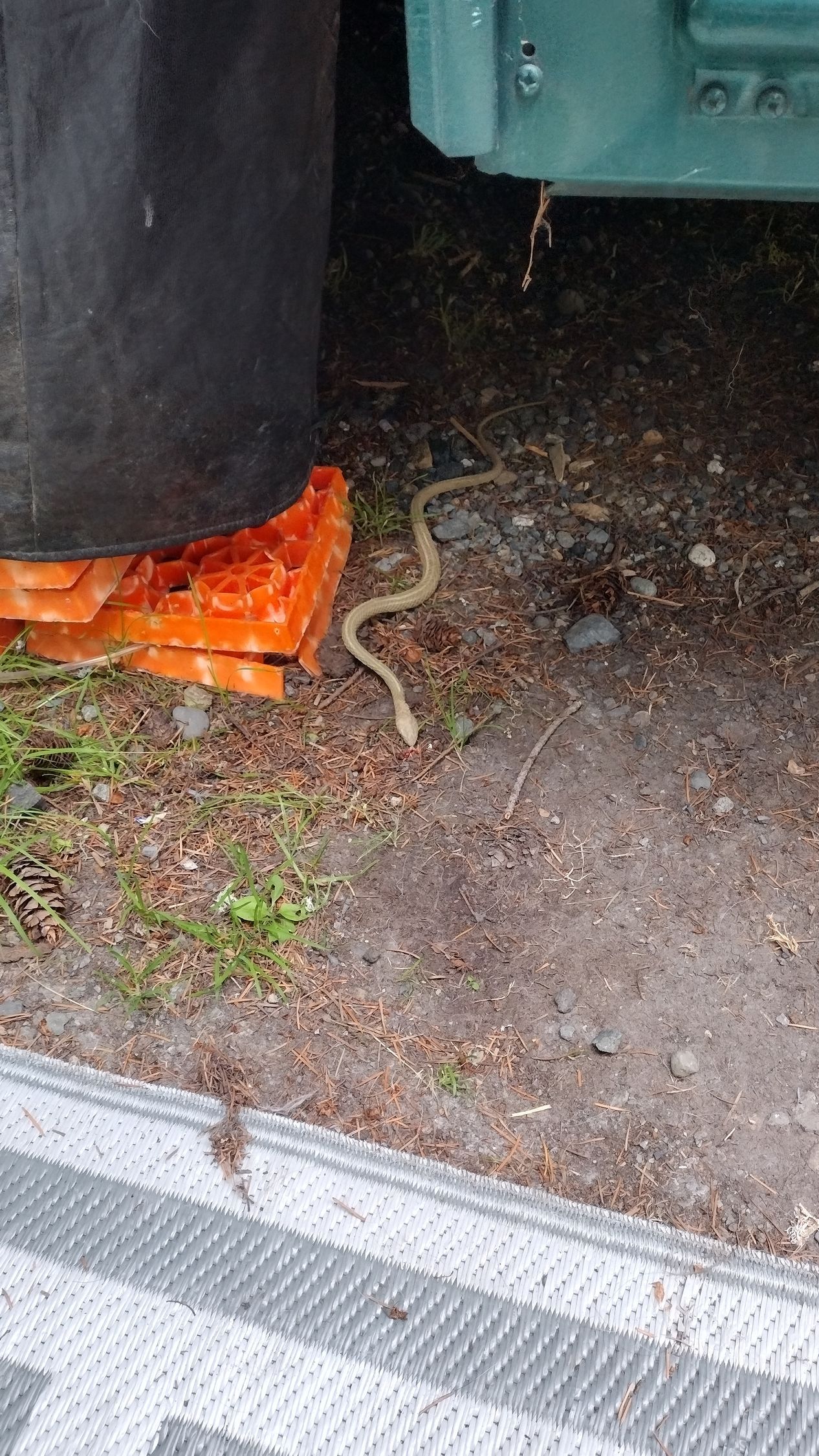
Finding Camping Spots
The best areas for boondocking are away from coasts, cities, and mountains. The desert areas of the southwest have many plentiful, easily accessed sites. Actually, mountains are great, but lots of elevation changes, twists, turns, and tight spaces aren’t great for our rig. If you have a small rig, explore the mountains for me.
Freecampsites.net, Campendium.com, and Google are our favorite places to find campsites. Many people swear by iOverlander.com, but we haven’t had much success with it.
Check the reviews, drive it virtually with Google street view, and check satellite imaging to get an idea of if it will work for your rig.
When you pull off the highway and arrive at the beginning of the road to get to your chosen site, scout ahead. We unhitch our small car and scout in that (it’s light enough that if it gets stuck, my husband can get it unstuck), but you can scout by bike or on foot, or even in your truck.
When we absolutely can’t find a natural space to boondock in, casino parking lots make surprisingly great overnight stops. We’ve never stayed in another parking lot, but have hit up a lot of casinos. They usually have good food and sometimes other entertainment like a bowling alley.
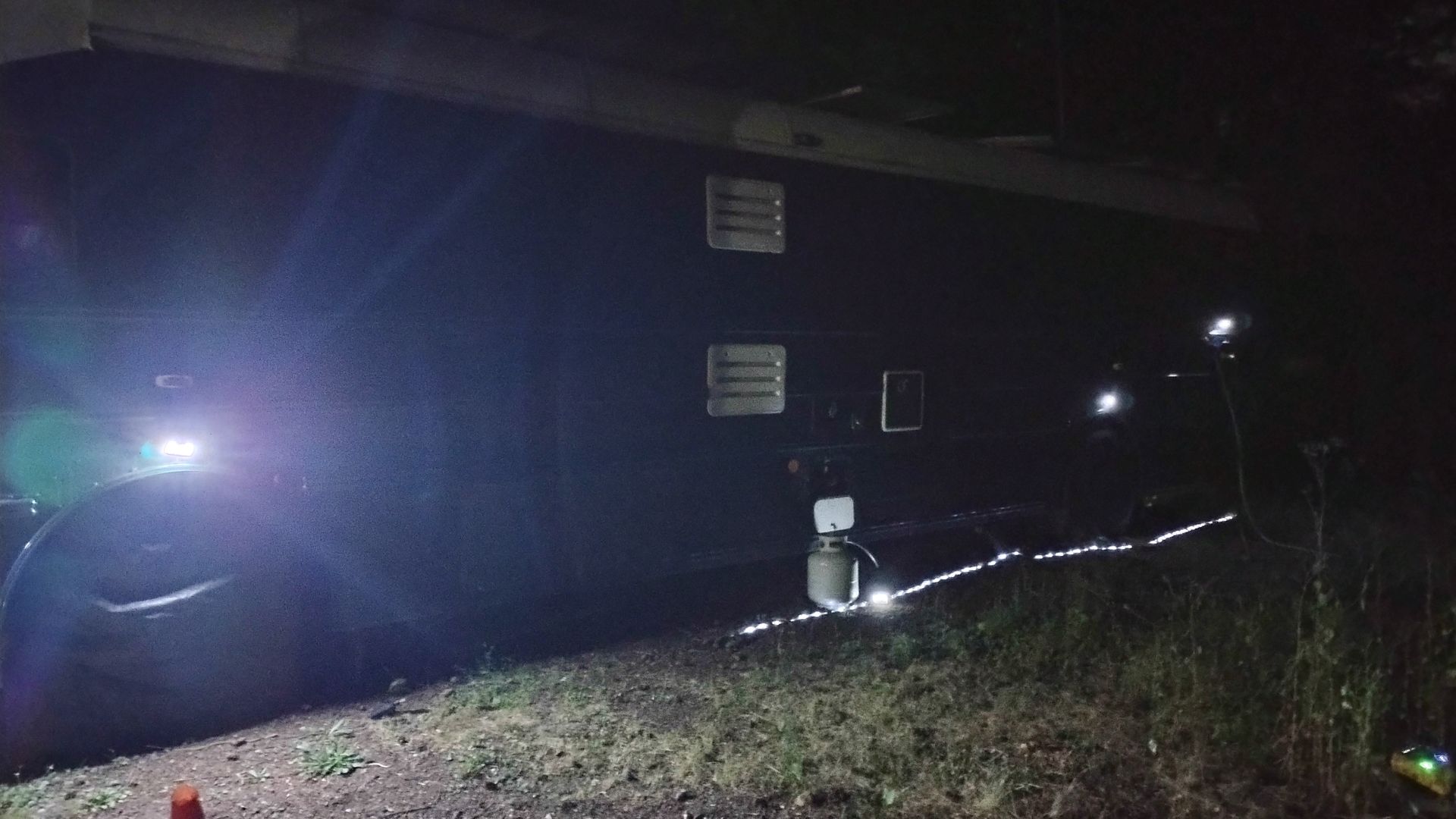
Safety
Overall, boondocking is usually very safe. Criminals don’t tend to want to go out into the middle of nowhere on the off-chance that someone might be camping there and might have something worth stealing. Most wild animals want to avoid humans. However, following these precautions can help you stay safer.
- Remember, tow trucks won’t leave pavement. Boondocking spots tend to be a bit off pavement; always scout ahead to make sure you don’t get your rig stuck. Yes, I already mentioned this, but it’s worth repeating.
- Keep track of where you’ve been and enable location tracking on your phone. The one time we felt a bit uncomfortable was when a ranger tried to insist we’d overstayed the 14-day limit. He backed off when we offered to show him our location history on our phones. Location tracking on your phone can also help law enforcement find you if you go missing or get stranded.
- If you’re lost or stranded and don’t have a way to recharge your phone, change your voicemail message to include your last known location, the date, and which direction you’re headed. Even when your phone dies or is out of service range, when someone calls it, they’ll get your recording and be able to send help.
- If you pull into a site and see signs of homeless activity, move on. That spot we weren’t entirely comfortable in? It also had signs of homeless people, which probably made the ranger testier.
- Anytime you don’t feel comfortable with a spot, move on. Whatever you call it: gut, instinct, intuition, etc; it will tell you when things aren’t right. Listen to it. (And listen to your kids. We always tell our kids to let us know if they don’t feel comfortable; they often have a better connection to their instincts as they haven’t had a lifetime of ignoring them.)
- If a ranger asks if you’re living in your rig, you’re not. You need to have a permanent address anyway; that’s “home.” We’ve been on the road for 3 years and home is with my in-laws.
- If you’re traveling alone, especially if you’re a single woman: You’re not actually traveling alone. Your husband, boyfriend, brother, father, or (big, male) friend is meeting you. You can even go so far as to buy a large pair of men’s boots from the thrift store, get them nice and muddy, and leave them outside your front door. And if someone makes you feel uncomfortable, put your key in the ignition and leave. Our homes have wheels for a reason; use them.
- Many people recommend a large dog or a firearm for protection. My family has chosen not to travel with a firearm; it doesn’t feel safe with kids, we’re not proficient enough with them for them to be an asset to us, and it can make traveling through different states more complicated. We do have a dog with a big bark, and she might help, but she comes with her own complications.
Again, boondocking is generally very safe. We’ve only had one spot that we didn’t feel entirely comfortable with, but still, nothing happened, even there. As long as it feels safe to you, you can likely leave your rig unattended without issue while you go into town for the day. (Please keep in mind that my family has a skoolie; I think there are precautions you can take if you have a towable.) If you’re nervous at first, arrange to camp with friends. Not only can it help you feel more secure, but your kids will love having friends to play with, too!
Other blogs you might like...
